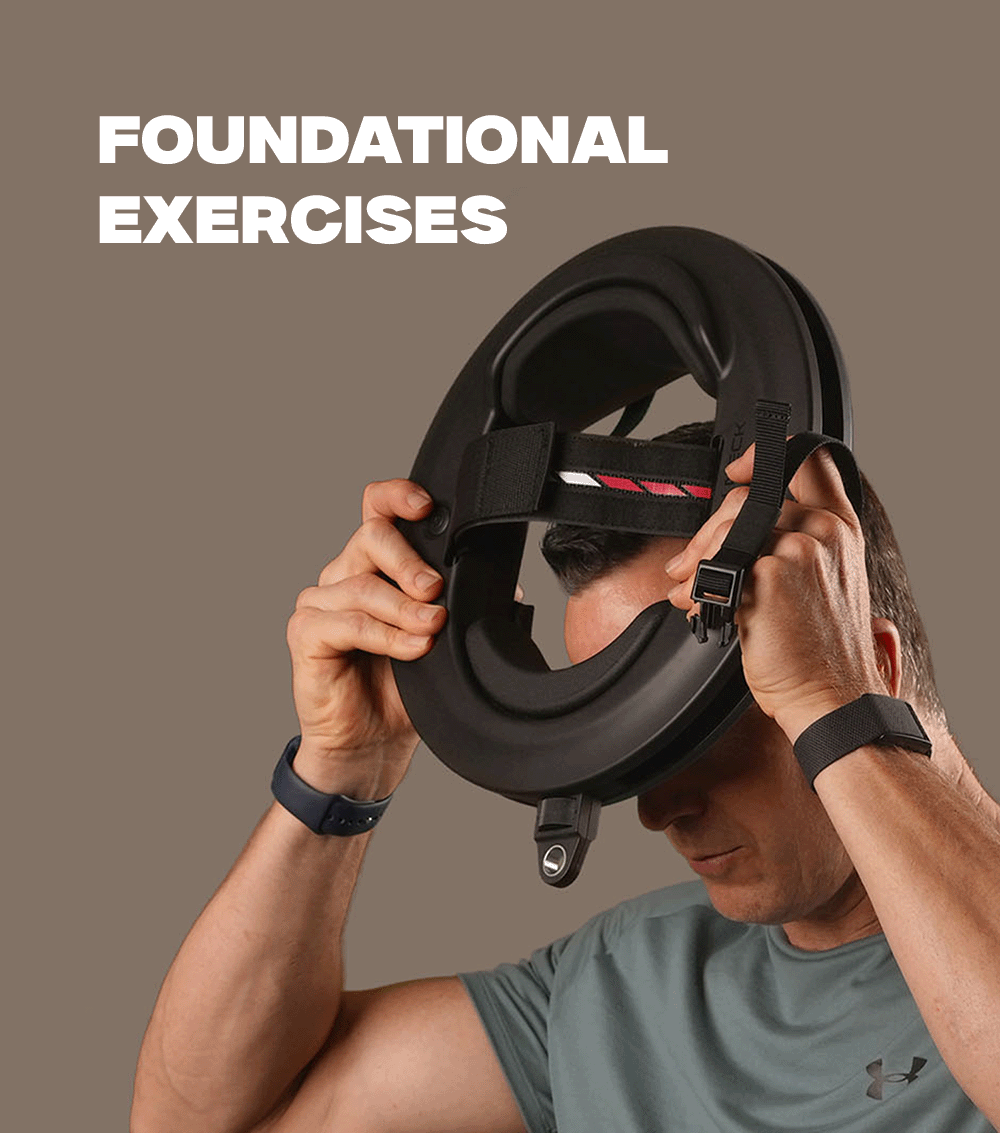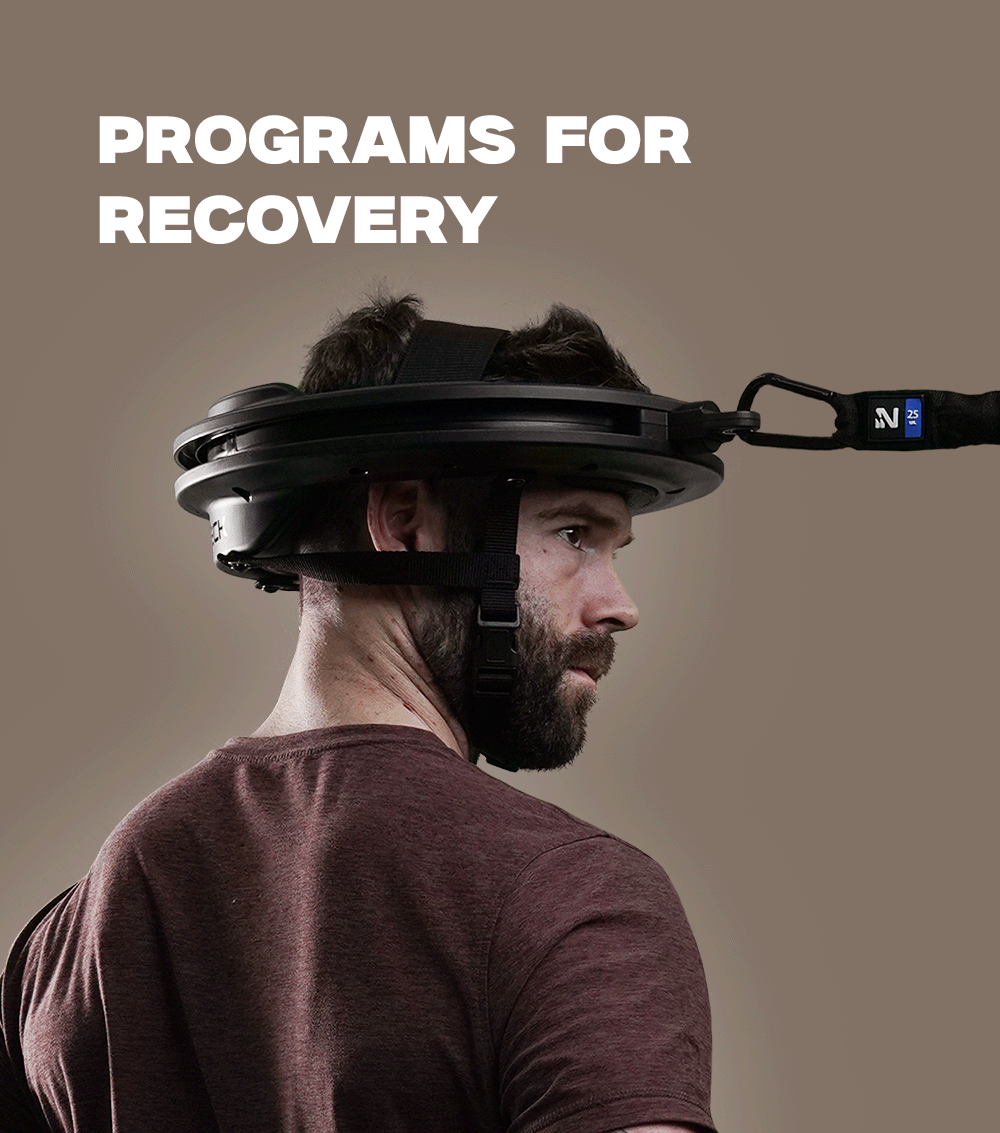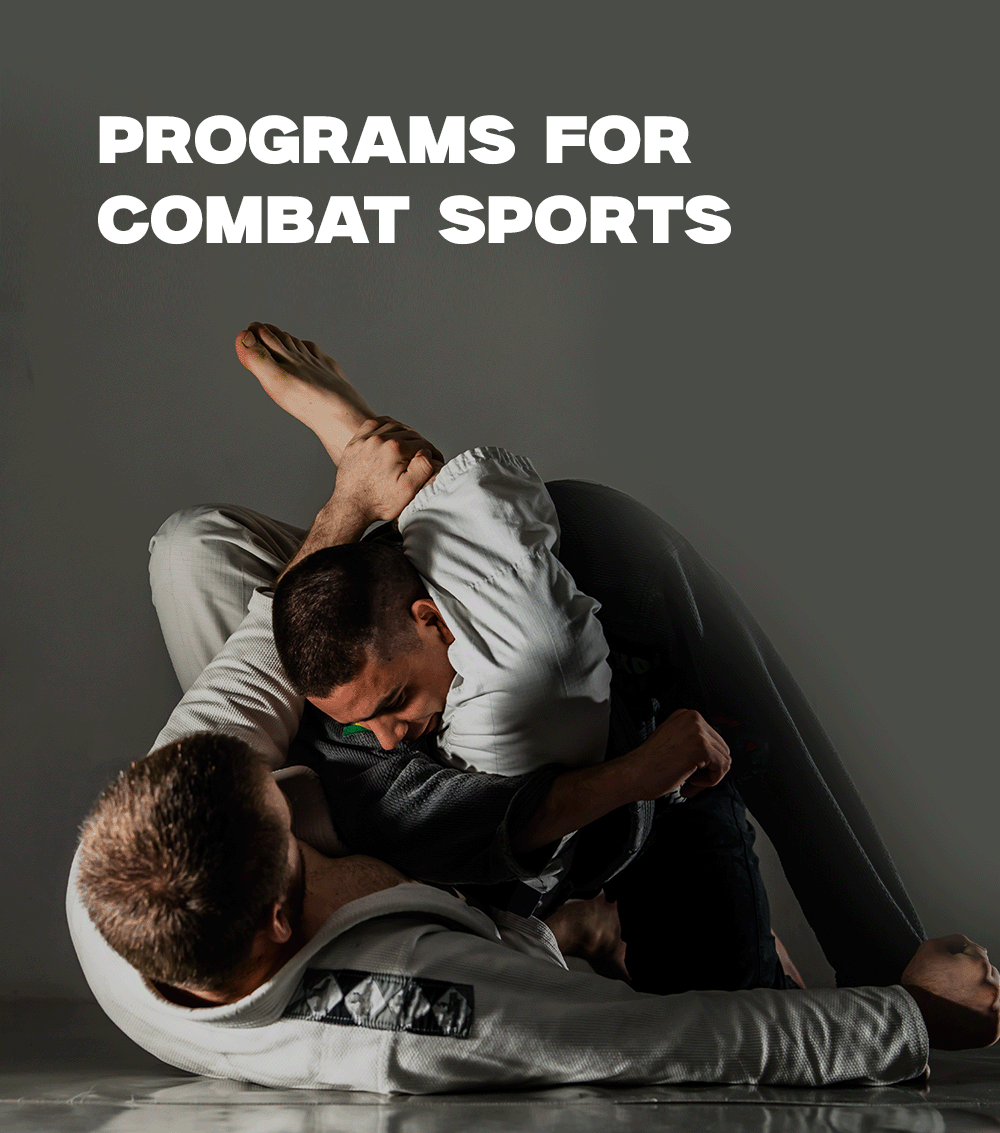Do you ever look at photos of yourself and see a double chin, or a neck that looks flabby? Training our necks isn’t something we often focus on, but it can make a big difference to our self-confidence and how other people see us. Plus, it’s great for improving our posture and preventing injuries.
But is training neck dangerous if you don’t have the experience? Your neck is delicate, after all, and connects your head to your back - both vital parts of your body! Damaging your neck can be one of the most serious injuries out there, with some people never quite recovering from a neck injury.
So, is neck training dangerous? That’s exactly what we’ll discuss in this article. We’ll help you understand the risks of neck training, and introduce you to some tactics for strengthening weak neck muscles the safe way.
Don’t risk something as important as your neck health! Check out our guide to discover neck tightening exercises and how to get a thicker neck without potentially giving yourself a serious, long-term injury.
Is Training Neck Dangerous?
So, is training neck dangerous? It’s very important to understand the potential risks of neck training before you dive into your first neck bridge exercise. Let’s take a look at the dangers of neck training, and how you can make your at-home neck workout safer.
What are the Dangers of Neck Training?
Neck flexibility exercises, particularly those involving resistance or weight, can place a lot of stress on the delicate muscles, ligaments, and vertebrae of your neck. Overexertion or poor form may cause muscle strains, sprains, or more severe injuries like herniated discs or vertebral fractures.
Your neck also houses crucial neurological structures, including the spinal cord and nerve roots. Excessive or improper cervical mobility exercises can potentially compress or impinge upon these delicate nerves, resulting in localized pain and numbness or more serious neurological problems.
Certain neck exercises, especially those involving rapid or forceful movements, may lead to whiplash injuries. Sudden neck extension or hyperflexion of the neck can strain the muscles and ligaments beyond their physiological limits, leading to acute pain and restricted mobility.
Can These Risks Be Avoided?
While the dangers of neck training are real, you can learn how to build neck strength safely. The most critical factor is using proper technique and form. Prioritize slow, controlled movements, and avoid excessive resistance or momentum.
Also, gradually increase the intensity and duration of neck training exercises over time to allow the muscles and supporting structures to adapt and strengthen gradually. Avoid the temptation to push beyond your limits too quickly, as this can increase the likelihood of overuse injuries or strain.
Finally, the right equipment can make a huge difference. Using dedicated training equipment for your neck isometrics can help protect your neck, ensuring your posture is right as you perform each exercise. Don’t worry, we’ll introduce you to the best neck training device soon!
Why Safe Neck Training is a Must for Athletes and Everyday People Alike
So, we’ve established that there are some risks associated with neck training, but this doesn’t mean you shouldn’t strengthen those neck muscles! The risks of carrying stress in shoulders and neck, or having weak neck muscles, can be just as serious as the risks of improper neck training.
The Role of the Neck in Overall Health and Well-being
Your neck serves as a crucial anatomical junction, connecting your head to the rest of your body and playing a critical role in your mobility, stability, and sensory perception.
Good neck health is essential for proper posture, supporting the weight of your head, and facilitating fluid movement of the spine. Neglecting your neck's strength and stability can lead to lots of different issues, including chronic pain and restricted mobility.
Risks Associated With Neglecting Neck Strength and Stability
If you don’t learn how to build neck muscles at home, it can lead to both short and long-term consequences. Weak neck muscles are more susceptible to strain and injury during everyday activities and exercise, increasing your risk of acute injuries such as whiplash or chronic conditions like cervical spondylosis.
Also, poor neck strength and stability can contribute to postural imbalances, which can lead to issues such as forward head posture and kyphosis. Learning how to improve neck posture with neck exercises has benefits that can be felt throughout your entire body.
How Safe Neck Training Enhances Performance and Reduces Injury Risk
Strengthening your neck muscles improves your overall stability and proprioception (your body’s ability to sense movement), enhancing your athletic performance and reducing the risk of injury during high-impact activities such as contact sports or weightlifting.
Plus, a robust neck provides a solid foundation for transmitting force between your upper body and lower extremities, optimizing movement efficiency and power generation. Basically, you’ll use less energy to do more. Win-win!
Alleviating Pain and Discomfort
For many people, neck pain and discomfort are constant challenges that impact daily life. Safe neck training techniques can provide relief from these symptoms by targeting weak or imbalanced muscle groups, improving posture, and enhancing spinal alignment.
By promoting muscle relaxation, increasing blood flow, and reducing inflammation, structured neck training protocols and neck spasm stretches offer a non-invasive and sustainable approach to managing neck-related pain and discomfort.
How to Get Started Training Neck Safely
So, training your neck is important, but how can you do those exercises for turkey neck safely? Let’s take a look at some of the most important factors to keep in mind when learning how to train your neck without risking injury.
Importance of Proper Warm-up and Mobility Work
Before diving into neck-specific exercises, it's crucial to prepare your muscles, ligaments, and joints for the upcoming activity. Incorporating dynamic warm-up exercises that target the neck and surrounding areas can help increase blood flow, enhance flexibility, and reduce your risk of injury.
Simple neck circles, neck crunches, slow neck rotation, side-to-side head tilts, and gentle neck stretches are excellent options to mobilize the cervical spine and prime your muscles for the upcoming workout.
Gradual Progression: Building Strength and Endurance Safely
As with any form of strength training, gradual progression is key to seeing results without risking overuse or strain. Start with basic neck exercises that focus on controlled movements and low resistance, such as neck nods, chin tucks, lateral neck flexion, and isometric neck holds.
As your neck gets stronger and you become more confident, you can move onto some of the best neck exercises for mass and start adding some resistance to make your workout more of a challenge and see better results.
You can also start to add specific exercises that address your goals, whether it’s neck exercise for vertigo, neck exercises for neck fat, thyroid neck exercises, neck arthritis exercises, tinnitus neck exercises, or whatever else.
Form and Technique: Ensuring Correct Alignment and Movement Patterns
Maintaining proper form and technique is so important when training your neck to mitigate the risk of injury. Pay close attention to your posture and alignment throughout each exercise, keeping your spine neutral and your shoulders relaxed.
Engage your core muscles to stabilize your trunk and avoid compensatory movements. When performing dynamic neck exercises, move through the full range of motion with control, avoiding jerky or abrupt motions that could strain your neck muscles or joints.
Getting the Right Equipment: Invest in Iron Neck for Safe, Effective Training!
As we already mentioned, the right equipment can make a big difference to your neck training routine. The Iron Neck is a dedicated neck machine designed for neck training, and the only device offering 4-in-1 benefits for recovery, prevention, posture, and mobility.
How does our revolutionary neck training harness work? Basically, the Iron Neck is an advanced harness that fits securely on your head. It’s connected to an anchor point, allowing you to safely add controlled resistance to every neck exercise you perform.
The Iron Neck’s tension brake system applies resistance and facilitates progressive overloading, which lets you safely build neck strength and improve your range of motion. Also, the unique design of the Iron Neck enables 360-degree isometric training, leading to holistic neck training.
Choosing the Right Exercises: Formulating a Well-Rounded Regimen to Avoid Imbalances
Another key to unlocking the benefits of a strong neck is to diversify your neck training routine by incorporating a variety of exercises that target different muscle groups (including the muscles on side of neck) and movement patterns.
Include exercises that work the muscles of the neck from multiple angles, including flexion, extension, lateral flexion, and rotation, to ensure balanced development and reduce the risk of muscular imbalances.
Start your neck transformation with these neck cable exercise, and these forward neck posture exercises. Make sure you’re performing each exercise on both sides evenly, to strengthen all muscles equally. You’ll soon see what the Iron Neck can do for you!
The Role of Recovery in Safe Neck Training
Just like other muscles you work out, your neck muscles need time to rest and recover between workouts. Incorporate rest days into your schedule so that your muscles can repair and rebuild, and try recovery strategies like foam rolling, stretching, and massage to alleviate muscle tension.
Not sure how often to train neck muscles? Listen to your body's signals and adjust your training intensity and volume to avoid burnout and maintain long-term progress - neck training is a marathon, not a sprint! And, if you ever have neck pain after workouts, take break for a few days.
Final Thoughts on the Dangers of Neck Training
So, is training neck dangerous? It certainly can be, especially if you don’t take the time to learn properly techniques, or you dive into a high-intensity neck training routine without warming up properly. You can seriously injure your neck, which can put you into a frustrating long-term rehab routine.
The problem is, NOT training your neck can be even more dangerous! Weak neck muscles can contribute to poor posture, which can lead to long-term, chronic back pain and other serious issues that affect your mobility and range of motion.
So, what’s the solution? The key is learning how to train your neck safely. By starting slowly, focusing on your posture, and using dedicated neck training equipment, you can safely strengthen your neck muscles, improving your neck’s tone and functional strength.
If you’re looking for a modern neck harness alternative that can take your neck training to incredible new levels, you’ve come to the right place! The Iron Neck’s unique design helps strengthen every muscle in your neck, promoting better mobility, strength, and injury prevention.
Get your Iron Neck today and experience the difference that a proper neck training routine can make!






